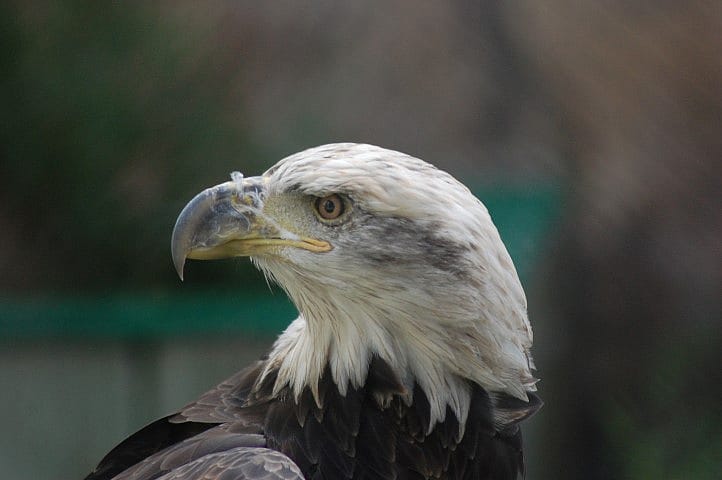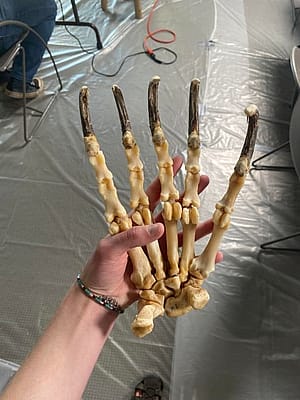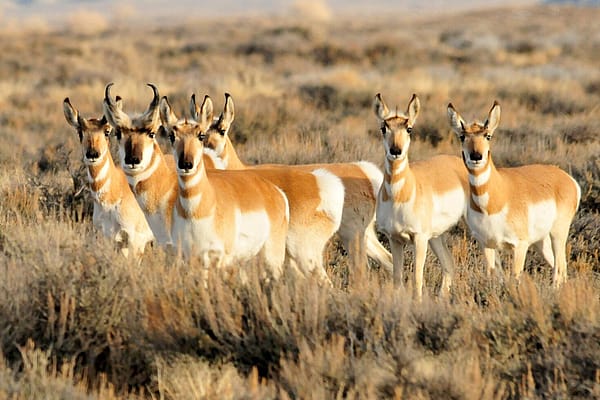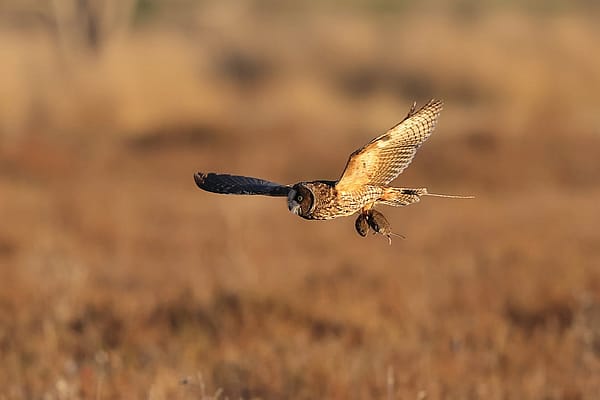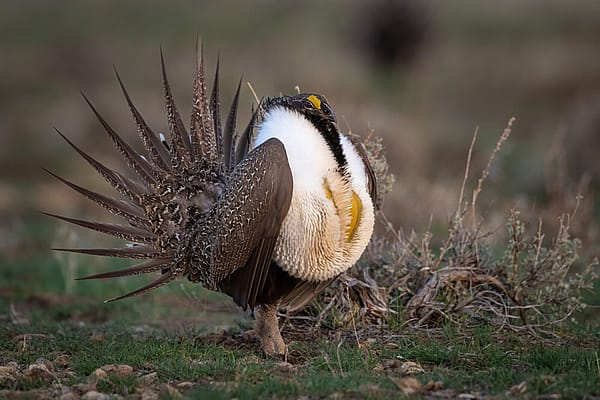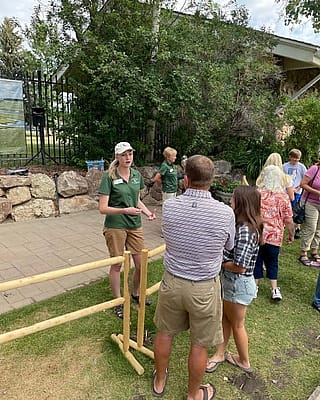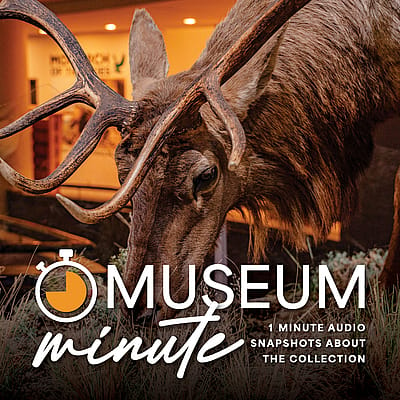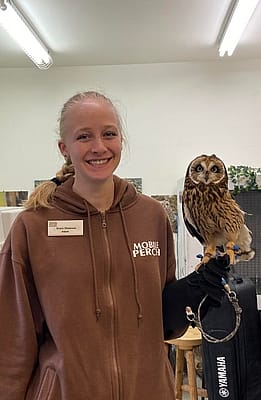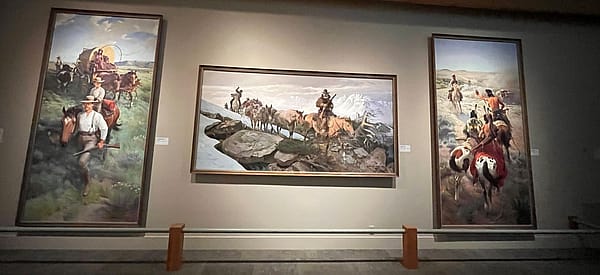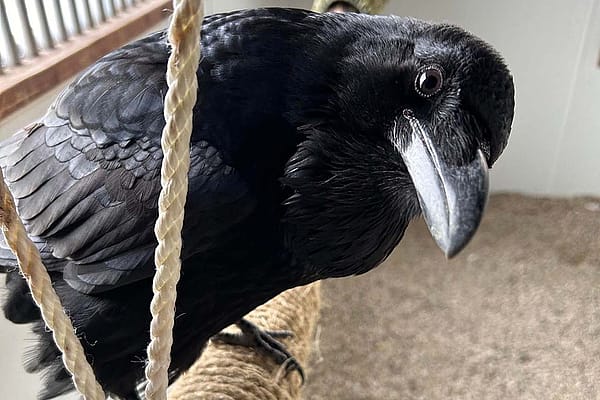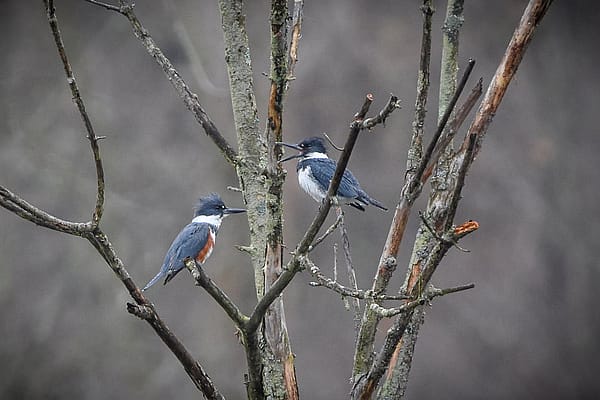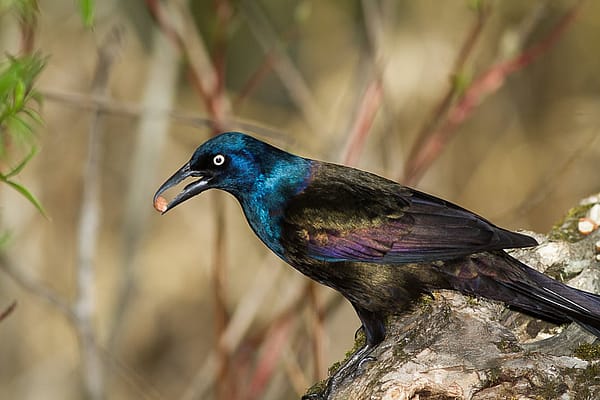Winter Survival
As I sit down to write this blog post, it’s warmed up to a balmy -2 degrees. Winter has fully set in in Wyoming and many of our visitors, fans, and even staff want to know how the birds are handling the extreme cold.
To put it simply, just fine. Each of the species we care for can be found right in this region. Of our nine species, only two actually migrate for the winter – peregrine falcons and turkey vultures. So, how do we keep our birds happy and healthy in the Wyoming winter?
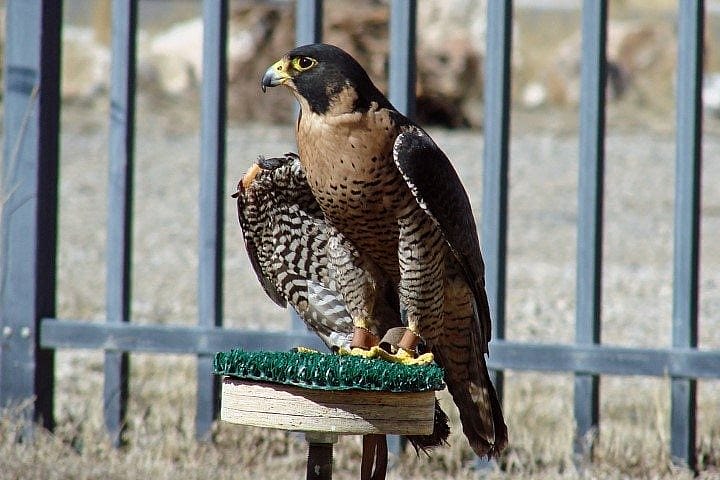
The first thing we do as winter approaches is begin feeding the birds more food. We bring their weights up a bit so they have a layer of fat to keep them warm and to burn on really cold days. We begin doing this in the fall, and it is a slow and gradual process.
The second step is to prepare the mews (the bird barn) for the colder temperatures. The building is designed with open air windows covered in PVC pipes to allow for air flow. This is particularly important in the summer when the temperatures rise and the rooms get stuffy. Although Teasdale (great horned owl) and Kateri (golden eagle) LOVE the cold and snow, it is not loved by all the birds. We put plexiglass inserts over the windows when the temperatures begin to drop. Although it doesn’t keep the rooms “warm,” it does significantly cut down on the cold and keeps them out of the wind – which often reaches gusts of more than 60 miles per hour!
For the migratory birds, we have a little more work to do. In addition to covering the windows, we seal the edges with weather stripping and cover their doors (which are essentially screen doors with lattice) with plastic – the same kits you might shrink-wrap over your windows. Hayabusa (peregrine falcon) and Suli (turkey vulture) each have their very own heater inside their mews. While their mews might not be as warm as where their wild counterparts are wintering, it rarely drops below 50 degrees for them.
Jade, our bald eagle, is the bird people are most concerned about. That’s understandable considering she lives outdoors 24 hours a day. Fortunately, Jade has it easy compared to her wild cousins. Bald eagles are hardy birds living in the extreme climates of Alaska and Canada, even in the winter. Although she can’t fly up into a tree during a storm, Jade does have a solid fence that blocks the harsh west wind as well as a large evergreen tree that shelters her from much of the rain and snow. Jade has one big advantage over the wild eagles – she is fed a large meal every single day. Her meal even sits on a heating pad so it won’t freeze before she can eat it!
So, while we appreciate that many folks worry about our birds in the winter, we want to assure you that they are fine. Because we try to spoil them in every way, we go above and beyond for their comfort. And don’t forget, they have a lot of natural adaptations to survive the cold as well. Ever wonder how the birds at your feeder survive in winter? Find out by visiting the Cornell Lab of Ornithology’s website at https://www.allaboutbirds.org/how-birds-survive-the-cold-feathers-food-warmth/
Stay warm & enjoy the season!!!
Melissa
Written By
Melissa Hill
While earning her Bachelor's Degree in Wildlife Management at the University of Wyoming, Melissa began volunteering at Laramie Raptor Refuge and was instantly hooked on birds of prey. Since those early days, she has worked with nearly 70 different raptors at four different raptor education groups in three states. She is a former member of the Education Committee for the International Association of Avian Trainers and Educators (IAATE) and a National Association for Interpretation's Certified Interpretive Guide. When she's not "playing with the birds" she enjoys spending time quilting, crocheting, and exploring the Greater Yellowstone Ecosystem with her non-bird family.
